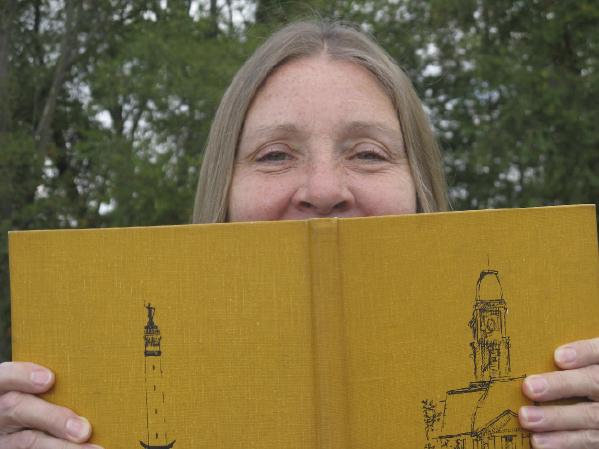Wooly Worms, Persimmon Seeds and the Lacy Building

It’s a reader feedback week!
The 2022-2023 winter forecast column prompted responses from several people.
Nancy Lacy emailed that WISH-TV weatherman Randy Ollis reported seeing a dark brown wooly worm, and Lisa Hayner and Mari Briggs provided the first sightings I’ve received of striped wooly worms — the kind that are mostly brown, with black on the ends.
Michael Kobrowski sent a photo of a white wooly worm. On Clara Hoover’s chart that means snow. (The photo was taken in Delaware County, though, so maybe the snow will stay there. Ha.)
Jeanne Flanders said she saw a yellow wooly worm crawling across a driveway — “I mean yellow — not white or cream colored.”
I don’t know what to make of that one. Yellow isn’t among the colors on Clara’s chart.
One of my persimmon seed sources, Steve Owens, usually doesn’t check his seeds until around Thanksgiving, but he said he recently found a few persimmons on the ground that appeared to be ripe, so he split some seeds a little early.
Steve’s four seeds all showed a knife shape, which surprised him. He said he’s never seen all knives before. He’s afraid that doesn’t bode well for this winter.
I didn’t have space to mention it in the previous column, but most of the online sources on this subject do state that knives forecast bitter (cutting) cold. On Clara’s chart, however, they symbolize fair weather.
Let’s hope Clara’s interpretation is the correct one!
Moving on to the Lacy building . . .
Jude Lees remembered the building’s big open third floor well, especially the half basketball court at the north end. He also mentioned that as a young boy he took tap dancing lessons there once a week. He was the only boy in a class with six girls!
When I wrote about the Lacy building, there was one fascinating aspect I didn’t have room to bring up — the Knights of Pythias goat.
Yes, “goat.”
I found a couple of articles that describe the K. of P. members’ move from their previous home, the Odd Fellows Lodge room on the south side of the courthouse square, to their new Castle Hall on the third floor of the Lacy building.
Both accounts were primarily concerned with how the lodge’s goat took to the change of address. According to the Noblesville Democrat, “his goatship” handled it pretty well, thanks to the calming influence of the K. of P. band which headed the procession.
Seriously? Did they really mean there was a live goat?
It sure reads that way.
The Hamilton County Ledger observed that “The most skeptical are now compelled to acknowledge his (the goat’s) existence” and the Democrat noted that the goat was led by a Knight in a Turkish costume.
Yet, the Democrat also stated “ . . .there is only one way to get a sight at him (the goat,) and that is to be luckly [sic] enough to gain admittance into the order.”
Okay, I was confused.
I did a little digging and learned that during the 19th and early 20th centuries, “riding the goat” was said to be a common part of the initiation ritual for several fraternal organizations, not just the K. of P. I even found a photo of one lodge posing with a goat.
But, did Noblesville’s K. of P. actually use a live goat in their initiations? Or were the newspapers pulling everybody’s leg?
I’m still not sure.
One thing is certain — some lodges DID put initiates on a mechanical goat. An Illinois company even manufactured one that flipped its rider upside down, fired blanks from its rear, and emitted a “ba-a-a” to make the goat “more goaty.”
Remember that the next time you think of our ancestors as staid and humorless.
Paula Dunn’s From Time to Thyme column appears on Wednesdays in The Times. Contact her at younggardenerfriend@gmail.com
